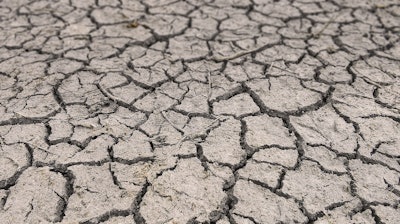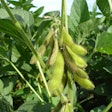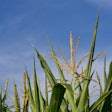
The latest U.S. Drought Monitor report from the National Drought Mitigation Center at the University of Nebraska-Lincoln, the United States Department of Agriculture, and the National Oceanic and Atmospheric Administration, shows that drought conditions have worsened across much of the country, with significant implications. As temperatures remain above normal and precipitation is scarce, regions critical to farming are experiencing expanding droughts that could impact crop yields and livestock production.
Southern Plains and Midwest hit hard
The South and Midwest have seen some of the most severe drought developments this past week, with higher-than-normal temperatures exacerbating already dry conditions. In Texas, parts of the state experienced temperatures more than 10 degrees above normal, worsening drought across eastern and central regions. Severe and extreme drought expanded across the central and Panhandle areas, leading to concerns for agricultural productivity as the long-term drought indicators show damage at various timescales.
Oklahoma, which is a major agricultural producer, also saw worsening conditions. Moderate and severe drought expanded across central Oklahoma, with extreme drought worsening in the northeastern part of the state. In neighboring Arkansas, all drought levels—moderate, severe, and extreme—expanded in the northwest.
In the Midwest, drought conditions have worsened, especially in the northern parts of Illinois, Indiana, Iowa, and southern Wisconsin. Rainfall in some areas slowed the drought progression but wasn't enough to reverse the damage. In Missouri, moderate and severe drought expanded across central and southern parts of the state, threatening crop yields as harvest season continues. Severe drought in northwest Iowa and parts of Minnesota also presents challenges to the region's farmers as soil moisture levels drop.
Dry conditions in the High Plains and West
The High Plains states, including Nebraska, Kansas, and the Dakotas, saw further drought expansion. Nebraska and Kansas, both critical for corn and wheat production, experienced increased severe and extreme drought areas, which could significantly affect yields. Kansas, for instance, saw severe drought conditions expand in the far southeast, while Nebraska’s dry conditions worsened statewide.
In Colorado and Wyoming, both states saw moderate and severe drought expand, threatening wheat, barley, and cattle production in these regions. Similar trends were seen across the West, where many states have faced prolonged dry periods. The Pacific Northwest saw some light rain along the coast, but most of the region remained dry. The desert Southwest, particularly Arizona, has faced record-setting heat, with Phoenix experiencing 21 consecutive days of all-time high temperatures.
Southeast and Northeast mixed
While much of the Southeast stayed dry, Hurricane Milton brought relief to parts of Florida, with significant rainfall from Tampa to just north of the Space Coast. These rains helped alleviate some drought concerns, but other states in the region remain in trouble. Alabama saw moderate drought expand in the south, with a new area of severe drought emerging. Meanwhile, in both North and South Carolina, coastal dryness remains a concern.
The Northeast saw some rainfall in New York, New Hampshire, and Vermont, but the southern parts of the region continue to worsen. Severe drought expanded over southern New Jersey, Delaware, and parts of Maryland, while moderate drought spread across Pennsylvania and eastern Massachusetts.
Outlook for farmers
The forecast for the next week offers little relief for drought-stricken areas. While parts of the Rocky Mountains and central Plains could see some precipitation, much of the agricultural heartland is expected to remain dry. Temperatures are anticipated to remain above normal across the Midwest and Plains, potentially worsening conditions for crops like corn, soybeans, and wheat.
As drought continues to expand, farmers face growing concerns over reduced yields, higher costs for irrigation, and the impact on livestock feed supplies. With above-normal temperatures expected to persist through the end of October, agriculture in the affected regions will remain under stress in the weeks to come.
This combination of widespread drought, high temperatures, and limited rain will likely impact harvests, posing challenges for both local markets and the broader agricultural economy.

















